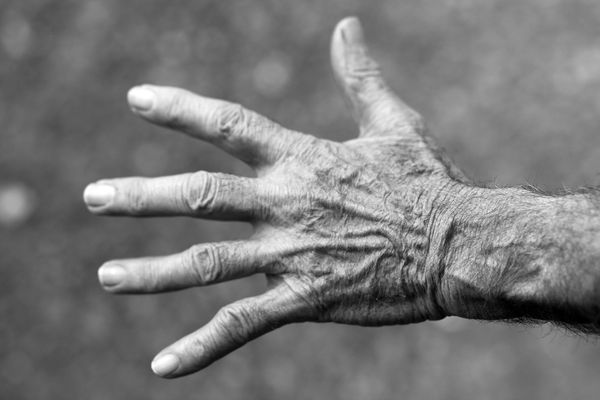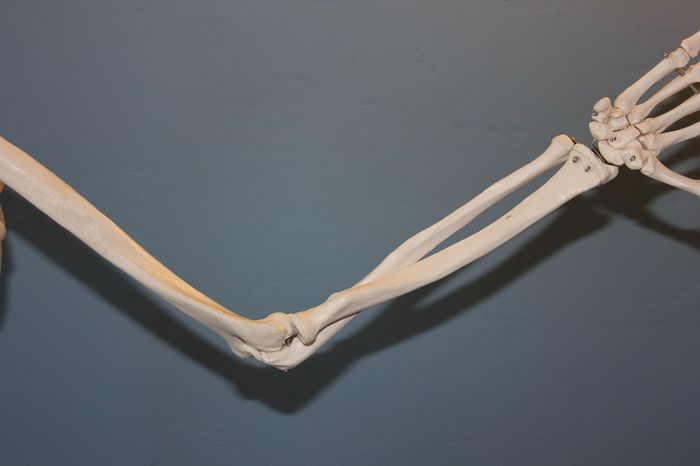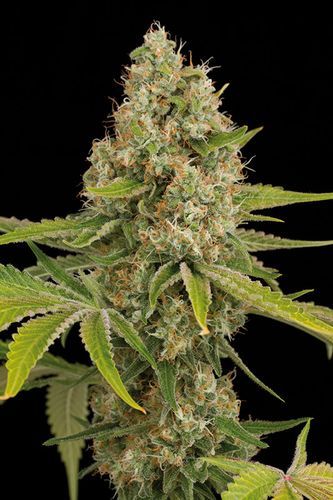- Arthritis is a chronic disease characterized by severe pain.
- Although incurable, cannabis can help mitigate pain and reduce swelling, to the point of being able to stop the progression of the disease, an effect that is attributable to the action of CBD and THC on the endocannabinoid system, as well as to the natural fats the plant contains.
- Further, cannabis contributes to the health of bones by stimulating the mineralisation of bone tissue in recovery processes.

Most of us know someone - generally an elderly person with a weakened immune system- who suffers from arthritis, one of the most common diseases affecting, in its different forms, one in four people worldwide at some point in their lives. In fact, the term 'arthritis' makes reference to a category that covers over 100 diseases affecting the joints and surrounding tissue.
In Spain alone 230,000 people suffer from rheumatoid arthritis, an incurable chronic ailment characterized by swollen peripheral joints that causes great discomfort to patients. According to a study carried out by José Luis Andréu Sánchez, president of the Spanish Society for Rheumatology, the global annual cost of arthritis treatment amounts to over 1 billion euro.
Although often mistaken for osteoarthritis or osteoporosis - the three diseases manifest themselves as joint pain - the origin of rheumatoid arthritis is rather different. In fact, this is an autoimmune disease that occurs when the body's immune cells mistakenly attack other cells in the body. Instead of fighting of intruders such as bacteria or viruses, the body attacks the synovial membranes that facilitate the movement of joints, eventually destroying cartilage and eroding bones. The pathology was identified centuries ago, yet its causes are still unknown.
The symptoms of the disease - pain and swelling that are treated with medication - severely weaken patients and cause them to double over in pain, eventually damaging some of their joints and limiting their daily activity. Luckily enough, medical marijuana can help stop the progression of the disease, or at the very least, provide patients with some pain relief.
Supported by science
Numerous studies have analysed the effects of cannabis on arthritic diseases, among which an experiment on mice published in 2007 which concluded that CB1 receptors of the endocannabinoid system may help control osteoarthritis, a disease closely related to rheumatoid arthritis that causes the ends of the bones and cartilage to swell and wear away. The results couldn't be more promising, as osteoarthritis is one of the most common form of arthritis affecting over 10 million people worldwide and currently there are no drugs available to control its progression.

Such is the importance of the endocannabinoid system in the treatment of these diseases, that further research has been conducted. A 2008 study, for instance, pointed to the therapeutic potential of cannabis-based medicines in the treatment of arthritis rheumatoid, which mainly affects the hands and feet causing deformity.
Other studies instead have focused on a group of vegetable fats found in cannabis, the so-called sterols, which are used as a natural analgesic alternative to conventional rheumatoid arthritis treatment. The presence of sterols in cannabis reaffirms the role of our favourite plant as a weapon to combat the disease, but it doesn't stop here: cannabis also suppresses the action of cytokines, a group of proteins with inflammatory effect.
When it comes to treatment, high CBD and THC strains are recommended. Research on animals has shown that cannabidiol, marijuana's main therapeutic cannabinoid, acts on the immune system slowing the progression of the disease - again, rheumatoid arthritis is an autoimmune disease that attacks the body's own cells. Further, if well tolerated, tetrahydrocannabinol can help patients relax, avoid depression and better deal with rough patches that bring pain and discomfort. And if the prescribed medication causes severe side effects, the relaxing properties of cannabis can help with that too.

All this contemporary research backs up the benefits of marijuana for treating musculoskeletal pain, something Europeans have been aware of since at least the 18th century. And still Europe didn't come first, as the Chinese, who were aware of the plant's pain-relieving properties, used it for medicinal purposes as far back as 2000 B.C. In fact, one of the earliest records of medical use of cannabis, a Chinese text dating from that date, noted that cannabis 'undoes rheumatism', pointing to its anti-inflammatory effect and to its effectiveness for treating the disease.
Choosing the right strain
There are guides that encourage arthritis sufferers to use marijuana, although they stress the need to seek medical advice - cannabis is a supplement, not a replacement therapy - and to use it in compliance with all laws and regulations applicable in the patient's country or region.
As already stated, when it comes to fighting arthritis with medical marijuana experts recommend high THC and CBD strains. Also, Indica strains are preferred over Sativas for their beneficial effects on muscles and soft tissue.
If you are looking for something more specific, you can try out OG Kush by Dinafem, a potent Indica hybrid that alleviates pain, helping the patient forget about the disease for a good while, and which is also great for inexperienced growers because of its easy growing nature and its short flowering period. Another option is our brand new Remo Chemo, a very potent strain that helps relax the muscles with its sedative and anti-inflammatory effect.

Again, as a general rule, all Indicas are suitable for treating arthritis. That said, some Sativas work very well too. A good example is Dinachem, a high-yielding strain that in addition to fighting arthritis, it also induces a state of euphoria that helps with depression, a frequent condition in patients dealing with persistent pain.
Creams and ointments
Smoke-averse patients and those who prefer other ways of benefiting from the therapeutic properties of cannabis anyway can resort to CBD oil and creams, the preferred option of many rheumatoid arthritis sufferers. The cannabinoids found in marijuana are water insoluble, but they do dissolve in fat and organic solvents, which is why they are better absorbed when applied as an ointment.
Additionally, a large number of the endocannabinoid system's receptors are located in the skin, maximising the effect of topical preparations and thus improving the patient's health condition. CBD-rich oil, for instance, modulates the inflammatory action of the above-mentioned cytokines, while creams help reduce paralysis of the limbs and cytokine production. According to a study published in the journal Daru by the University of Medical Sciences of Tehran, a preparation containing 1% purified CBD would be enough to obtain the described effect. In the same line, Sativex, the most popular cannabis-based medicine, provides pain relief and is indicated as adjunctive therapy in patients with multiple sclerosis for its anti-inflammatory effect.
Effect on bones
Besides soothing pain, cannabis is also a powerful tool for maintaining healthy bones, which are badly damaged by osteoarthritis and rheumatoid arthritis. Bones undergo extensive remodelling with aging and this can lead to the destruction or functional degradation of synovial joints.
The good thing about cannabis is that its effect is not limited to modulating pain from arthritis, it also protects the bones and helps them heal faster. These are the findings of a study led by researches from the University of Tel Aviv and published in the Journal of Bone and Mineral Research, which showed that femoral fractures in rats healed faster when they were administered with cannabidiol. As found in the study, CBD alone makes bones stronger during healing, enhancing the maturation of the collagenous matrix, which provides the basis for new mineralisation of bone tissue. Further, after being treated with CBD, the healed bone is more resistant to future fractures.
We can thus conclude that cannabis does not only enhance quality of life in the long term, it also helps patients forget about the painful effects of a chronic disease they are forced to struggle with every single day.



Comments from our readers
Read comments in other languages:
Did you like this post?
Your opinion about our seeds is very important to us and can help other users a lot (your email address won't be made public).